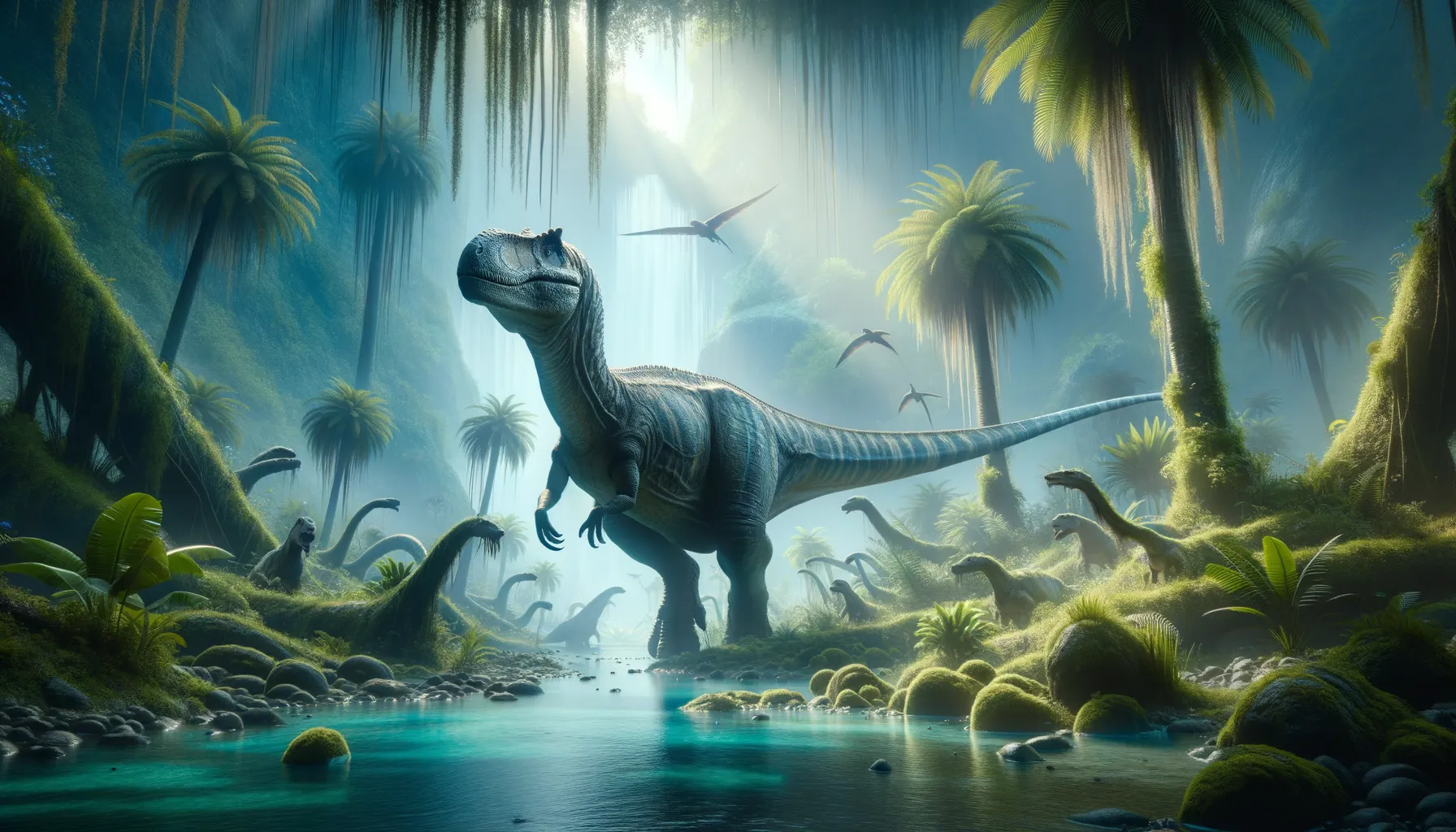
Nambalia
Early giant of the ancient Triassic world.
Period
Triassic
Length
Up to 3 meters long.
Height
Around 1.5 meters tall.
Weight
Approximately 70 to 100 kg.
Nambalia was a Triassic dinosaur that roamed what is now India. As a member of the early sauropodomorphs, it played a crucial role in the transition to the larger sauropods of later periods. This herbivorous dinosaur lived within a thriving ecosystem, sharing its habitat with a variety of contemporaneous species. Its discovery has provided valuable insights into the evolution of early dinosaurs during a pivotal time in Earth's history.
Diet
As a herbivore, Nambalia fed on a variety of plants. Its diet mainly consisted of ferns, cycads, and gymnosperms, which were abundant during the Triassic period.
Hunting
Nambalia did not engage in hunting, as it was a plant-eater. Instead, it likely foraged for food in the lush vegetation that covered its environment.
Environmental challenges
Nambalia lived during the Triassic period, a time of significant environmental changes, including fluctuating climates and volcanic activity. These changes influenced the distribution and availability of vegetation, presenting challenges in finding consistent food sources. The emergence of new predators might have added additional survival pressures.
Speed
Likely a slow-moving herbivore.
Lifespan
Estimated to be several decades.
First discovery
First discovered in India in 2006.
Fun Facts
- Nambalia is a dinosaur that roamed India approximately 200 million years ago during the Late Triassic period.
- This dinosaur is a part of the early group known as sauropodomorphs, which includes some of the largest dinosaurs that ever lived.
- Nambalia was relatively small, likely reaching lengths of about 10 to 12 feet, making it a modest-sized dinosaur.
- Unlike its giant descendants, Nambalia probably walked on two legs, helping it move quickly and efficiently.
- Fossils of Nambalia were first discovered in the Nambal village of Andhra Pradesh, India, from which it gets its name.
- The discovery of Nambalia helps scientists understand the early evolution of sauropodomorph dinosaurs, offering clues about how these animals evolved over millions of years.
- Nambalia's existence suggests that dinosaurs were already widely spread across the land that would become the Indian subcontinent, long before the continents shifted to their current positions.
Growth and Development
Nambalia likely had a steady growth rate, reaching maturity over several years. The transition from small juveniles to larger adults would have required significant energy and resources. Growth spurts might correspond to periods of abundant food supply and favorable environmental conditions.
Habitat
The habitat of Nambalia consisted of forested areas with abundant vegetation. The environment supported a diverse array of plant life, providing ample food sources. Water sources would have been essential, contributing to the lush greenery of the region.
Interaction with other species
Nambalia shared its environment with various other dinosaur and reptile species. These interactions would have ranged from competition for food to possible predator-prey relationships. Cooperation or coexistence with other herbivores might have helped in deterring predators.
Natural lifespan
Nambalia may have lived for a few decades, assuming optimal conditions.
Reproduction
Nambalia likely reproduced by laying eggs in nests. The care of young might have varied, with some level of parental protection during the early stages. Reproductive strategies would have been geared towards maximizing survival of offspring in a dynamic environment.
Social behaviour
Nambalia might have exhibited some social behavior, possibly living in small groups. Group living would provide safety in numbers against predators and increase efficiency in finding food. Communication within these groups could have involved vocalizations or visual signals.
Fossil locations
Fossils of Nambalia have been found in India, particularly in the Upper Maleri Formation. The discovery site has provided key information about the early stages of dinosaur evolution. Continued exploration in this region might yield more fossils, enhancing our understanding of Nambalia's role in its ecosystem.
